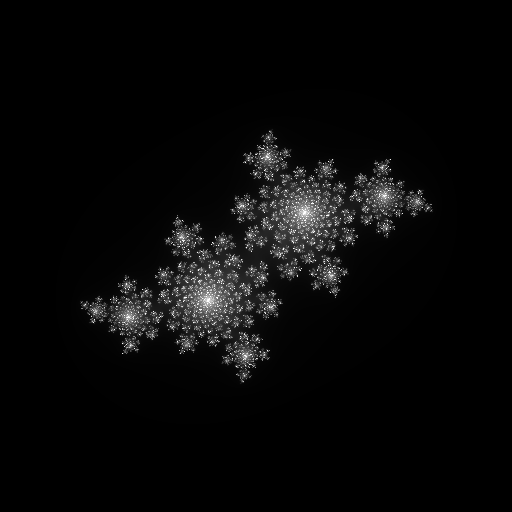Maintainers: @nwin, @ccgn
This crate provides basic imaging processing functions and methods for converting to and from image formats.
All image processing functions provided operate on types that implement the GenericImage trait and return an ImageBuffer.
Add the following to the Cargo.toml in your project:
[dependencies] image = "*"
and import using extern crate:
extern crate image; //Use image::
http://www.piston.rs/image/image/index.html
image provides implementations of common image format encoders and decoders.
| Format | Decoding | Encoding |
|---|---|---|
| PNG | All supported color types | Same as decoding |
| JPEG | Baseline and progressive | Baseline JPEG |
| GIF | Yes | Yes |
| BMP | Yes | No |
| ICO | Yes | Yes |
| TIFF | Baseline(no fax and packbits support) + LZW | No |
| Webp | Lossy(Luma channel only) | No |
| PPM | No | Yes |
ImageDecoder TraitAll image format decoders implement the ImageDecoder trait which provides the following methods:
image provides the following pixel types:
All pixels are parameterised by their component type.
GenericImage TraitA trait that provides functions for manipulating images, parameterised over the image's pixel type.
pub trait GenericImage { /// The pixel type. type Pixel: Pixel; /// The width and height of this image. fn dimensions(&self) -> (u32, u32); /// The bounding rectangle of this image. fn bounds(&self) -> (u32, u32, u32, u32); /// Return the pixel located at (x, y) fn get_pixel(&self, x: u32, y: u32) -> P; /// Put a pixel at location (x, y) fn put_pixel(&mut self, x: u32, y: u32, pixel: P); /// Return an Iterator over the pixels of this image. /// The iterator yields the coordinates of each pixel /// along with their value fn pixels(&self) -> Pixels<Self>; }
image provides two main ways of representing image data:
ImageBufferAn image parametarised by its Pixel types, represented by a width and height and a vector of pixels. It provides direct access to its pixels and implements the GenericImage trait.
extern crate image; use image::{ GenericImage, ImageBuffer }; //Construct a new ImageBuffer with the specified width and height. let img = ImageBuffer::new(512, 512); //Construct a new by repeated calls to the supplied closure. let img = ImageBuffer::from_fn(512, 512, |x, y| { if x % 2 == 0 { image::Luma([0u8]) } else { image::Luma([255u8]) } }); //Obtain the image's width and height let (width, height) = img.dimensions(); //Access the pixel at coordinate (100, 100) let pixel = img[(100, 100)]; //or using the ```get_pixel``` method from the ```GenericImage``` trait let pixel = img.get_pixel(100, 100); //Put a pixel at coordinate (100, 100) img.put_pixel(100, 100, pixel); //Iterate over all pixels in the image for pixel in img.pixels() { //Do something with pixel }
DynamicImageA DynamicImage is an enumeration over all supported ImageBuffer<P> types. Its exact image type is determined at runtime. It is the type returned when opening an image. For convenience DynamicImage's reimplement all image processing functions.
DynamicImage implement the GenericImage trait for RGBA pixels.
SubImageA view into another image, delimited by the coordinates of a rectangle. This is used to perform image processing functions on a subregion of an image.
extern crate image; use image::{ GenericImage, ImageBuffer, imageops }; let ref mut img = ImageBuffer::new(512, 512); let subimg = imageops::crop(img, 0, 0, 100, 100); assert!(subimg.dimensions() == (100, 100));
These are the functions defined in the imageops module. All functions operate on types that implement the GenericImage trait.
image provides the open function for opening images from a path.
The image format is determined from the path's file extension.
extern crate image; use std::fs::File; use std::path::Path; use image::GenericImage; fn main() { // Use the open function to load an image from a Path. // ```open``` returns a dynamic image. let img = image::open(&Path::new("test.jpg")).unwrap(); // The dimensions method returns the images width and height println!("dimensions {:?}", img.dimensions()); // The color method returns the image's ColorType println!("{:?}", img.color()); let ref mut fout = File::create(&Path::new("test.png")).unwrap(); // Write the contents of this image to the Writer in PNG format. let _ = img.save(fout, image::PNG).unwrap(); }
//!An example of generating julia fractals. extern crate num; extern crate image; use std::fs::File; use std::path::Path; use num::complex::Complex; fn main() { let max_iterations = 256u16; let imgx = 800; let imgy = 800; let scalex = 4.0 / imgx as f32; let scaley = 4.0 / imgy as f32; // Create a new ImgBuf with width: imgx and height: imgy let mut imgbuf = image::ImageBuffer::new(imgx, imgy); // Iterate over the coordiantes and pixels of the image for (x, y, pixel) in imgbuf.enumerate_pixels_mut() { let cy = y as f32 * scaley - 2.0; let cx = x as f32 * scalex - 2.0; let mut z = Complex::new(cx, cy); let c = Complex::new(-0.4, 0.6); let mut i = 0; for t in (0..max_iterations) { if z.norm() > 2.0 { break } z = z * z + c; i = t; } // Create an 8bit pixel of type Luma and value i // and assign in to the pixel at position (x, y) *pixel = image::Luma([i as u8]); } // Save the image as “fractal.png” let ref mut fout = File::create(&Path::new("fractal.png")).unwrap(); // We must indicate the image’s color type and what format to save as let _ = image::ImageLuma8(imgbuf).save(fout, image::PNG); }
Example output:

If the high level interface is not needed because the image was obtained by other means, image provides the function save_buffer to save a buffer to a file.
extern crate image; use std::path::Path; fn main() { let buffer: &[u8] = ...; // Generate the image data // Save the buffer as "image.png" image::save_buffer(&Path::new("image.png"), buffer, 800, 600, image::RGB(8)).unwrap() }